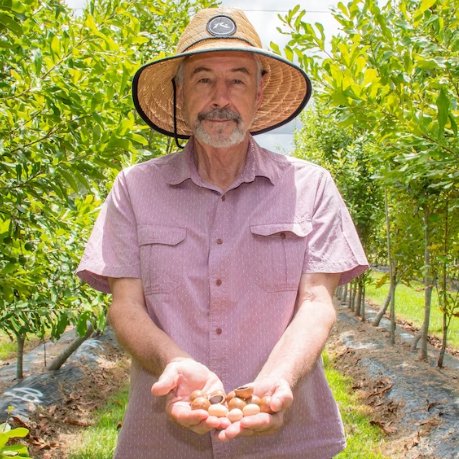Australia is the world’s second largest producer of macadamia, with cultivation of 17,000 hectares in Queensland and New South Wales. Although it is native to Australia, most of the world’s nuts are produced from cultivars bred in Hawaii. The QAAFI-led macadamia breeding program aims to change this anomaly. In the Hort Innovation breeding project, QAAFI is evaluating over 10,000 second generation progeny trees in 15 field trials. Elite selections for secondary grower evaluation and for regional variety testing are produced with the industry defined target traits of yield, tree size, nut quality and pest resistance.

The Macadamia Industry Varietal Improvement Committee (MIVIC) met in Nambour and Bundaberg on 7-8 February to examine some of the QAAFI field trials and discuss the outputs from the project. At the MIVIC meeting were representatives from the Australian Macadamia Society, Hort Innovation, Department of Agriculture and Fisheries, NSW DPI and growers from QLD and NSW. Industry is keenly involved in the breeding with over half the progeny planted on industry orchards.
The industry representatives examined a traditional breeding field trial planted with 300 trees/ha at Bundaberg and contrasted this with a high-density planting of 5,000 trees/ha at Nambour. The high-density planting is part of a strategy that uses genomic selection for early prediction of progeny performance and hence requires less time for the trees in the field. At the Bundaberg site MIVIC members evaluated four new selections for commercial potential. These selections will be propagated for regional testing in 2024.
The field days were covered by ABC Rural journalist Jennifer Nichols, and the ABC Online story is available here.
Images of the Maroochy field day are available via Flickr.
For more information: Professor Bruce Topp, b.topp@uq.edu.au, +61 (0)427 682 384; QAAFI Comms, Natalie MacGregor, n.macgregor@uq.edu.au, +61 (0)409 135 651.



